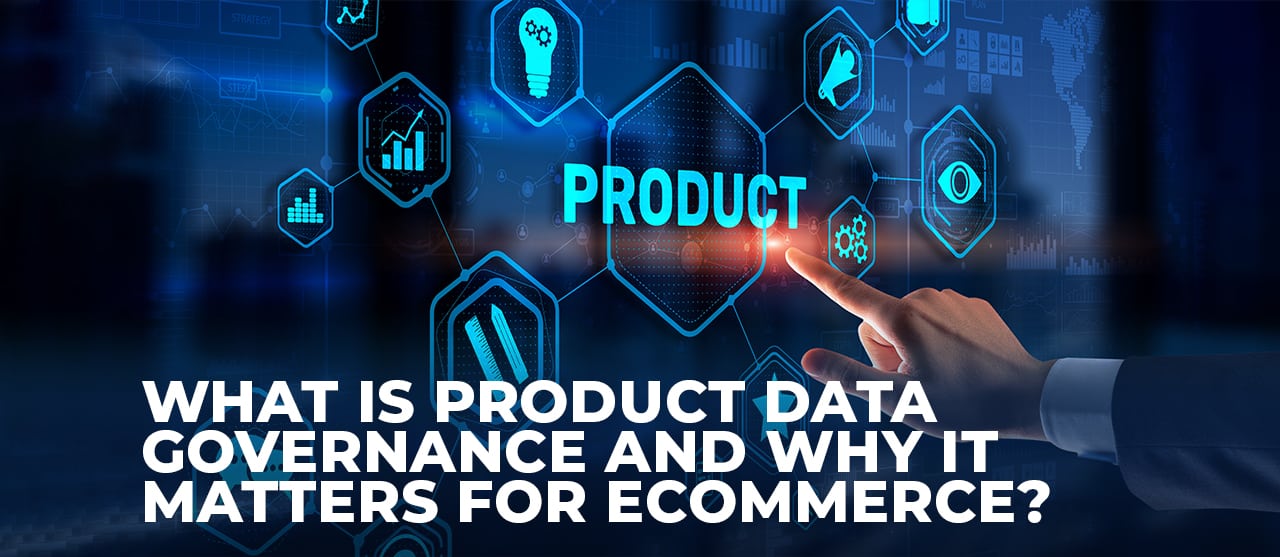
According to Gartner, organizations hold poor quality data as the cause of an estimated $15 million worth of losses per year. The consulting giant also points out that approximately 60% of businesses do not measure their annual cost of bad data quality.
For brands trying to streamline their online sales, maintaining complete and accurate data is the most critical element to succeed. However, achieving this goal requires a robust product data governance process in place that delivers actionable frameworks.
What Is Product Data Governance?
Product data governance is one of the most crucial processes for a business to succeed in the digital age. Having accurate balances and checks for product information of any item sold in the marketplace is more important than ever.
TechTarget defines data governance as the process of managing the “availability, usability, integrity, and security of the data” within enterprise systems, depending on internal data standards and policies controlling data usage.
Although the concept sounds complicated, it is relatively simple in practice. Data governance allows enterprises to know their data, the data’s accuracy, and where it’s overlapping. The data governance practices ensure secure data storage and privacy, structured data availability, product data analytics, and accurate data across multiple channels.
When it comes to product data governance, ongoing maintenance is critical to prevent unforeseen consequences. It requires a robust PIM (Product Information Management) platform to centralize product data along with data practices.
Continuous product data governance ensures the best governance practices are sustained. All in all, product data governance is not a one-time solution; it’s an ongoing procedure that consistently gives you clean, coherent, and consistent product data.
Data Management Vs. Data Governance
Data governance is often mistaken for data management and vice versa. It is essential to understand the differences in using these two strategies where applicable. According to DAMA, data management is a set of processes used for planning, identifying, facilitating, designing, developing, retaining, utilizing, archiving, saving, managing, and cleaning data. Contrarily, data governance is just a process of data management. It oversees procedures that an enterprise sets to ensure the security and quality of data in possession and operation.
The Product Data Governance Framework
Businesses handling vast volumes of eCommerce data should be able to visualize the bigger picture when it comes to product data governance. For that, using an ideal data governance framework that helps with data collection, data management, distribution, and storage is important.
The product data governance framework entails some basic steps leading enterprises to a smooth and agile implementation:
- Defining goals and analyzing benefits
- Evaluating the present condition and conducting delta analysis
- Developing the roadmap based on findings
- Preparing a budget and reassuring the action plan
- Introducing and organizing a data governance plan
- Facilitating step-by-step execution
- Examining and testing the progress of the program, its quality, and making amends
Practically, each enterprise should have its customized product data governance framework in place.
What Makes Product Data Governance Important For eCommerce?
The global product data governance market crossed the $2.1 billion mark in 2020. As it stands, more and more enterprises are advocating its innate benefits for eCommerce services.
Here’s why businesses should invest in intrinsic product data governance strategies:
1. Cost Saving
Characteristically, the supply chain involves designing, planning, sourcing, production, logistics, and distribution. In each stage, a large amount of data is transferred between the external and internal stakeholders. Incompetent data management could cause data asset loss, biased demand forecasts, etc., leading to a long-term cost burden.
In the data designing phase, a structured data plan can reduce developmental costs. And a cohesive product data governance strategy ensures relevant data is carefully stored in one central location so that other users and systems can consume it — all while adhering to security and accuracy.
2. Data Streamlining
Product data governance ensures appropriate data storage and eliminates incorrect dataset referencing. Establishing enterprise-wide data quality and data-centric views assists the transition of an information-centric industry into a digitally-empowered entity.
3. Transparency
Data governance fosters a transparent and trusted environment. A centralized workflow-driven data management system brings together the key components of an asset, such as product configuration, change control, etc. It also considers the technical aspects of the parts of a product, its attributes, and supplementary documentation. It is equipped to supply accurate data having role-specific visibility with additional permissions to ensure data management and governance.
4. Putting Milestones & Metrics In Place
Product data governance allows you to put tools and processes together with a set of well-defined milestones and metrics. As a result, it ensures data reliability. Without planned and thoughtful business rules and diligent data governance, enterprises would only work on flawed and skewed datasets. Often, the data flowing across divisions may not be synced properly due to the lack of a centralized hub.
To that end, data governance aids in defining processes and metrics to ensure data accuracy, reliability, and quality. This initially involves collaboration across supply chains to decode the common issues, data validation, cleaning, and data monitoring control. Besides that, product data governance ensures that enterprise-wide standardized data and processes function as one unit.
5. Risk Identification
With broader supply chains and multiple stakeholders, there has been an exponential rise in information exchange through both authorized as well as unauthorized networks, suggesting that the risks persist. Inefficient data governance may lead to many unforeseen risks, such as misuse of sensitive data.
It’s also noteworthy that data management provides internal and external members of an organization with access to relevant data. However, robust security infrastructure is critical to ensuring data is protected from theft and cyber incidents.
A comprehensive governance strategy that can define data point checks and controls and further monitor data location deviances is one way to mitigate risk. Proper data governance gives access to trails of data audits that monitor and track the retrieved data. This also downsizes the expensive errors.
Final Word
The new technology-powered data systems collect, analyze, and streamline data to make it more intuitive, easy to use, and accessible. Here, by implementing product data governance policies, companies can ensure high data quality, regulatory compliance, auditing and lineage, accuracy and consistency, increased efficiency, etc. This bodes particularly well for eCommerce, for it heavily relies on data-driven decision-making.
At EnFuse, we’re always working to foster innovation and drive substantive value out of data governance initiatives. Explore our offerings here.

















Comment